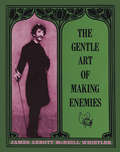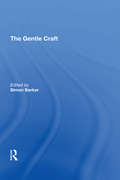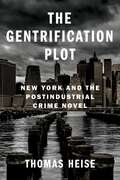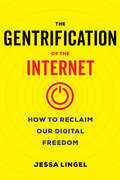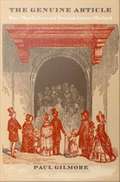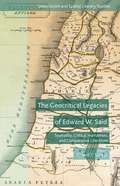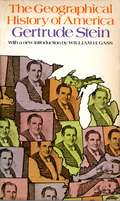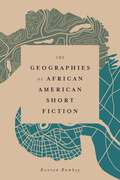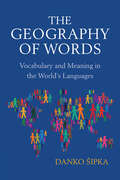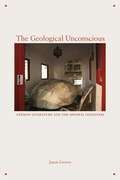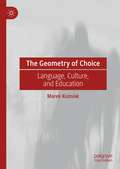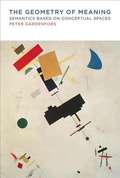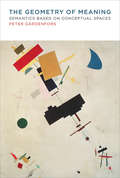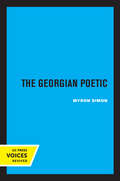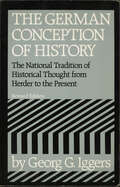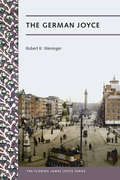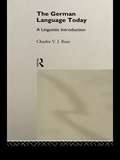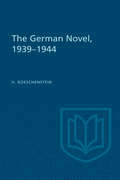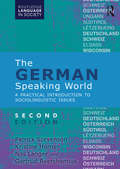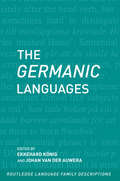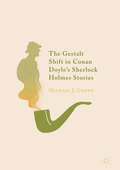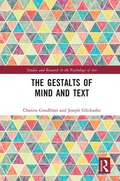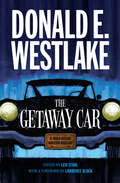- Table View
- List View
The Gentle Art of Making Enemies
by James M. WhistlerWhistler's Gentle Art, a classic in the literature of insult and denigration, might well be subtitled "The Autobiography of a Hater," for it contains the deadly sarcasm and stinging remarks of one of the wittiest men of the nineteenth century. Whistler not only refused to tolerate misunderstanding by critics and the so-called art-loving public -- but launched vicious counterattacks as well. His celebrated passages-at-arms with Oscar Wilde and Swinburne, the terse and penetrating "letters to the editor," his rebuttals to attacks from critics, and biting marginal notes to contemptuous comments on his paintings and hostile reviews (which are also reprinted) are all part of this record of the artist's vendettas.Whistler's most famous battle began when critic John Ruskin saw one of the artist's "Nocturnes" exhibited in Grosvenor Gallery. "I have seen, and heard," wrote Ruskin, "much of cockney impudence before now; but never expected to hear a coxcomb ask two hundred guineas for flinging a pot of paint in the public's face." Whistler was incensed with this criticism, and initiated the famous libel case "Whistler vs. Ruskin." Extracts from the resultant trial record are among the highlights of this book, with Whistler brilliantly annihilating his Philistine critics, but winning only a farthing in damages.The Gentle Art, designed by Whistler himself, is a highly entertaining account of personal revenges, but it is also an iconoclast's plea for a new and better attitude toward painting. As a historical document, it is the best statement of the new aesthetics versus the old guard academics, and it helped greatly in shaping the modern feeling toward art.
The Gentle Art of Verbal Self-Defense
by Suzette Haden ElginDon't turn the other cheek and fume quietly; know what to say when someone throws out the snide backhanded "compliment," subtle insult, cruel criticism, or outright verbal blow.
The Gentle Craft: By Thomas Deloney (Non-canonical Early Modern Popular Texts)
by Simon BarkerAlthough it was probably conceived as a trilogy, only the first two parts of Thomas Deloney's prose romance were completed, dealing with the origins of the shoemaker's trade and how it succeeded in London. The Gentle Craft is best known as the principal source of Thomas Dekker's The Shoemaker's Holiday. But Deloney's tale of Simon Eyre, who founded Leadenhall, the centre of the leather trade, and rose to be Lord Mayor of London, is itself significant for its adaptation of euphemistic romances and jestbooks. In this volume the author offers in modern typography, with explanatory notes and an extensive introduction, an account of the sources and influence of the book, its publication history and what is known of its author. He suggests that Deloney's combination of romance with the practical morality of an emerging social class produced a text that is uniquely important for those interested in late-Elizabethan popular culture.
The Gentrification Plot: New York and the Postindustrial Crime Novel (Literature Now)
by Thomas HeiseFor decades, crime novelists have set their stories in New York City, a place long famed for decay, danger, and intrigue. What happens when the mean streets of the city are no longer quite so mean? In the wake of an unprecedented drop in crime in the 1990s and the real-estate development boom in the early 2000s, a new suspect is on the scene: gentrification. Thomas Heise identifies and investigates the emerging “gentrification plot” in contemporary crime fiction. He considers recent novels that depict the sweeping transformations of five iconic neighborhoods—the Lower East Side, Chinatown, Red Hook, Harlem, and Bedford-Stuyvesant—that have been central to African American, Latinx, immigrant, and blue-collar life in the city. Heise reads works by Richard Price, Henry Chang, Gabriel Cohen, Reggie Nadelson, Ivy Pochoda, Grace Edwards, Ernesto Quiñonez, Wil Medearis, and Brian Platzer, tracking their representations of “broken-windows” policing, cultural erasure, racial conflict, class grievance, and displacement. Placing their novels in conversation with oral histories, urban planning, and policing theory, he explores crime fiction’s contradictory and ambivalent portrayals of the postindustrial city’s dizzying metamorphoses while underscoring the material conditions of the genre. A timely and powerful book, The Gentrification Plot reveals how today’s crime writers narrate the death—or murder—of a place and a way of life.
The Gentrification of the Internet: How to Reclaim Our Digital Freedom
by Jessa LingelHow we lost control of the internet—and how to win it back. The internet has become a battleground. Although it was unlikely to live up to the hype and hopes of the 1990s, only the most skeptical cynics could have predicted the World Wide Web as we know it today: commercial, isolating, and full of, even fueled by, bias. This was not inevitable. The Gentrification of the Internet argues that much like our cities, the internet has become gentrified, dominated by the interests of business and capital rather than the interests of the people who use it. Jessa Lingel uses the politics and debates of gentrification to diagnose the massive, systemic problems blighting our contemporary internet: erosions of privacy and individual ownership, small businesses wiped out by wealthy corporations, the ubiquitous paywall. But there are still steps we can take to reclaim the heady possibilities of the early internet. Lingel outlines actions that internet activists and everyday users can take to defend and secure more protections for the individual and to carve out more spaces of freedom for the people—not businesses—online.
The Genuine Article: Race, Mass Culture, and American Literary Manhood
by Paul GilmoreIn The Genuine Article Paul Gilmore examines the interdependence of literary and mass culture at a crucial moment in U. S. history. Demonstrating from a new perspective the centrality of race to the construction of white manhood across class lines, Gilmore argues that in the years before the Civil War, as literature increasingly became another commodity in the capitalist cultural marketplace, American authors appropriated middle-brow and racially loaded cultural forms to bolster their masculinity. From characters in Indian melodramas and minstrel shows to exhibits in popular museums and daguerrotype galleries, primitive racialized figures circulated as "the genuine article" of manliness in the antebellum United States. Gilmore argues that these figures were manipulated, translated, and adopted not only by canonical authors such as Hawthorne, Thoreau, Cooper, and Melville but also by African American and Native American writers like William Wells Brown and Okah Tubbee. By examining how these cultural notions of race played out in literary texts and helped to construct authorship as a masculine profession, Gilmore makes a unique contribution to theories of class formation in nineteenth-century America. The Genuine Article will enrich students and scholars of American studies, gender studies, literature, history, sociology, anthropology, popular culture, and race.
The Geocritical Legacies of Edward W. Said
by Robert T. Tally Jr.Edward W. Said is considered one of the most influential literary and postcolonial theorists in the world. Affirming Said's multifaceted and enormous critical impact, this collection features essays that highlight the significance of Said's work for contemporary spatial criticism, comparative literary studies, and the humanities in general.
The Geographical History of America: or the Relation of Human Nature to the Human Mind
by Gertrude Stein"First published in 1936 and long out of print, The Geographical History of America brings together prose pieces, dialogues, philosophical meditations, and playlets by one of the century's most influential experimental writers. This short but brilliant book offers a dimension of Gertrude Stein's thinking not available elsewhere. Here Stein sets forth her view of the human mind: what it is, how it works, and how it is different from - and more interesting than - human nature. " "Geographical History also elaborates on Stein's concepts of identity, landscape, presence, and composition. Today, as literary discourse pays more attention to textuality, to voice, reader-response, and phenomenology, Stein emerges as a pioneering modernist to whom the century is slowly catching up. For those in the performing arts, Geographical History further addresses the notion of play as landscape, one of Stein's most influential theatrical ideas, as well as such issues as dialogue, character, and dramatic structure - in a book that is itself a model of modern experimentation. "--BOOK JACKET. Title Summary field provided by Blackwell North America, Inc. All Rights Reserved
The Geographies of African American Short Fiction (Margaret Walker Alexander Series in African American Studies)
by Kenton RambsyPerhaps the brevity of short fiction accounts for the relatively scant attention devoted to it by scholars, who have historically concentrated on longer prose narratives. The Geographies of African American Short Fiction seeks to fill this gap by analyzing the ways African American short story writers plotted a diverse range of characters across multiple locations—small towns, a famous metropolis, city sidewalks, a rural wooded area, apartment buildings, a pond, a general store, a prison, and more. In the process, these writers highlighted the extents to which places and spaces shaped or situated racial representations. Presenting African American short story writers as cultural cartographers, author Kenton Rambsy documents the variety of geographical references within their short stories to show how these authors make cultural spaces integral to their artwork and inscribe their stories with layered and resonant social histories. The history of these short stories also documents the circulation of compositions across dozens of literary collections for nearly a century. Anthology editors solidified the significance of a core group of short story authors including James Baldwin, Toni Cade Bambara, Charles Chesnutt, Ralph Ellison, Zora Neale Hurston, and Richard Wright. Using quantitative information and an extensive literary dataset, The Geographies of African American Short Fiction explores how editorial practices shaped the canon of African American short fiction.
The Geography of Words: Vocabulary and Meaning in the World's Languages
by Danko SipkaLanguages around the world organize their lexicons, or vocabularies, in a myriad of different ways. This book is a celebration of global linguistic diversity, bringing together fascinating cases from a wide range of languages to explore how and why this lexical variation occurs. Each of the thirty-six short chapters shows how different culturally-specific words, relating to a range of phenomena such as kinship, colour, space, time, objects, smells, and animals, vary across languages and geographical locations. It also explains the mechanisms of development in vocabularies, showing why this variation occurs, and how languages and cultures interact, to deepen the reader's understanding of one of the most important aspects of linguistics. Assuming little to no prior knowledge of linguistics, and introducing concepts in an accessible way, this book is an entertaining, informative read for anyone who wants to learn more about the incredible variation and diversity of the human lexicon.
The Geological Unconscious: German Literature and the Mineral Imaginary
by Jason GrovesAlready in the nineteenth century, German-language writers were contending with the challenge of imagining and accounting for a planet whose volatility bore little resemblance to the images of the Earth then in circulation. The Geological Unconscious traces the withdrawal of the lithosphere as a reliable setting, unobtrusive backdrop, and stable point of reference for literature written well before the current climate breakdown.Through a series of careful readings of romantic, realist, and modernist works by Tieck, Goethe, Stifter, Benjamin, and Brecht, Groves elaborates a geological unconscious—unthought and sometimes actively repressed geological knowledge—in European literature and environmental thought. This inhuman horizon of reading and interpretation offers a new literary history of the Anthropocene in a period before it was named.These close readings show the entanglement of the human and the lithic in periods well before the geological turn of contemporary cultural studies. In those depictions of human-mineral encounters, the minerality of the human and the minerality of the imagination become apparent. In registering libidinal investments in the lithosphere that extend beyond Carboniferous deposits and beyond any carbon imaginary, The Geological Unconscious points toward alternative relations with, and less destructive mobilizations of, the geologic.
The Geometry of Choice: Language, Culture, and Education
by Marek KuźniakThis book offers a cognitive-semantic insight into the roots of the human decisionmaking process, using the metaphor of CHOICE as CUBE. The areas of key interest are language, culture, and education as forms of social organization. This book addresses issues relevant to a number of fields, including social epistemology, cognitive linguistics, cognitive anthropology, philosophy, culture and education studies, and will be of interest to readers in these and related disciplines.
The Geometry of Meaning
by Peter GärdenforsIn The Geometry of Meaning, Peter Gärdenfors proposes a theory of semantics that bridges cognitive science and linguistics and shows how theories of cognitive processes, in particular concept formation, can be exploited in a general semantic model. He argues that our minds organize the information involved in communicative acts in a format that can be modeled in geometric or topological terms -- in what he terms conceptual spaces, extending the theory he presented in an earlier book by that name. Many semantic theories consider the meanings of words as relatively stable and independent of the communicative context. Gärdenfors focuses instead on how various forms of communication establish a system of meanings that becomes shared between interlocutors. He argues that these "meetings of mind" depend on the underlying geometric structures, and that these structures facilitate language learning. Turning to lexical semantics, Gärdenfors argues that a unified theory of word meaning can be developed by using conceptual spaces. He shows that the meaning of different word classes can be given a cognitive grounding, and offers semantic analyses of nouns, adjectives, verbs, and prepositions. He also presents models of how the meanings of words are composed to form new meanings and of the basic semantic role of sentences. Finally, he considers the future implications of his theory for robot semantics and the Semantic Web.
The Geometry of Meaning: Semantics Based on Conceptual Spaces
by Peter GardenforsA novel cognitive theory of semantics that proposes that the meanings of words can be described in terms of geometric structures. In The Geometry of Meaning, Peter Gärdenfors proposes a theory of semantics that bridges cognitive science and linguistics and shows how theories of cognitive processes, in particular concept formation, can be exploited in a general semantic model. He argues that our minds organize the information involved in communicative acts in a format that can be modeled in geometric or topological terms—in what he terms conceptual spaces, extending the theory he presented in an earlier book by that name. Many semantic theories consider the meanings of words as relatively stable and independent of the communicative context. Gärdenfors focuses instead on how various forms of communication establish a system of meanings that becomes shared between interlocutors. He argues that these “meetings of mind” depend on the underlying geometric structures, and that these structures facilitate language learning. Turning to lexical semantics, Gärdenfors argues that a unified theory of word meaning can be developed by using conceptual spaces. He shows that the meaning of different word classes can be given a cognitive grounding, and offers semantic analyses of nouns, adjectives, verbs, and prepositions. He also presents models of how the meanings of words are composed to form new meanings and of the basic semantic role of sentences. Finally, he considers the future implications of his theory for robot semantics and the Semantic Web.
The Georgian Poetic
by Myron SimonThis title is part of UC Press's Voices Revived program, which commemorates University of California Press’s mission to seek out and cultivate the brightest minds and give them voice, reach, and impact. Drawing on a backlist dating to 1893, Voices Revived makes high-quality, peer-reviewed scholarship accessible once again using print-on-demand technology. This title was originally published in 1975.
The German Conception of History: The National Tradition of Historical Thought from Herder to the Present
by Georg G. IggersThe first comprehensive critical examination in any language of the German national tradition of historiography This is the first comprehensive critical examination in any language of the German national tradition of historiography. It analyzes the basic theoretical assumptions of the German historians of the nineteenth and twentieth centuries and relates these assumptions to political thought and action. The German national tradition of historiography had its beginnings in the reaction against the Enlightenment and the French Revolution of 1789. This historiography rejected the rationalistic theory of natural law as universally valid and held that all human values must be understood within the context of the historical flux. But it maintained at the same time the Lutheran doctrine that existing political institutions had a rational basis in the will of God, though only a few of these historians were unqualified conservatives. Most argued for liberal institutions within the authoritarian state, but considered that constitutional liberties had to be subordinated to foreign policy—a subordination that was to have tragic results. Mr. Iggers first defines Historismus or historicism and analyzes its origins. Then he traces the transformation of German historical thought from Herder's cosmopolitan culture-oriented nationalism to exclusive state-centered nationalism of the War of Liberation and of national unification. He considers the development of historicism in the writings of such thinkers as von Humboldt, Ranke, Dilthey, Max Weber, Troeltsch, and Meinecke; and he discusses the radicalization and ultimate disintegration of the historicist position, showing how its inadequacies contributed to the political débâcle of the Weimar Republic and the rise of National Socialism. No one who wants to fully understand the political development of national Germany can neglect this study.
The German Demonstratives: A Study in the Columbia School Framework (Peking University Linguistics Research #2)
by Lin LinThis book explores, analyzes, and compares the use of German and Chinese demonstratives. Discourse and textual uses of the forms are considered, as well as their locative and temporal uses. The author observes that in both languages the demonstratives can be used to refer to referents. However, she departs from the common assumption that proximal demonstratives refer to entities or places close to the speaker, while non-proximal demonstratives refer to entities or places far from the speaker. Having analyzed a representative sampling consisting of a German text and a Chinese text, the author argues that both German and Chinese proximal demonstratives can signal the meaning of HIGH DEIXIS in a system of DEIXIS in the Columbia School of linguistics framework, whereas their non-proximal demonstratives can signal the meaning of LOW DEIXIS. In addition, Chinese demonstratives can be used under more circumstances than German demonstratives due to the lack of articles in Chinese. The author also argues that Cognitive Linguistic analysis is more helpful for new language learners, whereas the Columbia School of linguistics may be better suited to advanced learners who wish to know more about the intrinsic differences between words with similar meanings and uses.This book aims to help German learners better understand the German reference system. Readers with a Chinese language background will definitely benefit more from the book, as well as Chinese learners with a German language background. For pure linguistic enthusiasts and multi-linguals, the book offers an extensive introduction to the Columbia School of linguistics, and can open a new horizon for learning a new language comparatively.
The German Joyce (Florida James Joyce)
by Robert K. Weninger"The first comprehensive account of the enormous impact of Joyce on German modernist and postmodern writers. An indispensable book on Joyce's 'German' face."—Gerald Gillespie, Stanford University In August 1919, a production of James Joyce's Exiles was mounted at the Munich Schauspielhaus and quickly fell due to harsh criticism. The reception marked the beginning of a dynamic association between Joyce, German-language writers, and literary critics. It is this relationship that Robert Weninger analyzes in The German Joyce. Opening a new dimension of Joycean scholarship, this book provides the premier study of Joyce's impact on German-language literature and literary criticism in the twentieth century. The opening section follows Joyce's linear intrusion from the 1910s to the 1990s by focusing on such prime moments as the first German translation of Ulysses, Joyce's influence on the Marxist Expressionism debate, and the Nazi blacklisting of Joyce's work. Utilizing this historical reception as a narrative backdrop, Weninger then presents Joyce's horizontal diffusion into German culture. Weninger succeeds in illustrating both German readers' great attraction to Joyce's work as well as Joyce's affinity with some of the great German masters, including Goethe and Rilke. He argues that just as Shakespeare was a model of linguistic exuberance for Germans in the eighteenth century, Joyce became the epitome of poetic inspiration in the twentieth. This volume, through Weninger's critiques and repositions, simultaneously revisits the fraught relationship between influence and intertextuality in literary studies and reassesses their value as tools for contemporary comparative criticism today. Robert K. Weninger, emeritus professor of German and comparative literature at King’s College London, is author or editor of over ten books, including Arno Schmidts Joyce-Rezeption 1957-1970: Ein Beitrag zur Poetik Arno Schmidts, and is a past editor of the Journal of Comparative Critical Studies.
The German Language Today: A Linguistic Introduction
by Charles RussThis clear and accessible text provides a complete introduction to basic linguistic terms and descriptions of language structures. The German Language Today describes in detail the main liguistic features of the language and the wide variety of speech forms and vocabulary existing within the German-speaking community. It also introduces sociolinguistic and linguistic topics as they relate to the German language, and illustrates them widely with examples. The German Language Today describes the sounds, inflectional processes, syntactic structures, competing forms and different layers of words in the language. Topics covered include: The distribution of German and its dialects The linguistic consequences of German reunification The application of modern linguistic concepts to German, incorporating the findings of the latest German linguistic research. The book has been written with the specific needs of students in mind. It will be invaluable to students of modern German linguistics or modern German society and will be a useful reference resource for postgraduates and teachers of German.
The German Novel, 1939-1944
by H. BoeschensteinThis book begins the large task of sorting out the vast number of German literary works which the war has piled up before us. The author has culled over four hundred novels and critical works and by indicating the numbers and content of the more significant novels, and some of their stylistic characteristics, he has shortened the task of future research.If this investigation provides a fair indication, it appears that the widely held conviction that German publishers brought out nothing but trash during the war years is mistaken. By now, students of literature should be in a sufficiently intelligent and tolerant mood to accept some detailed evidence and to begin to scrutinize it objectively. The present study is intended as a step in that direction.
The German-Speaking World: A Practical Introduction to Sociolinguistic Issues (Routledge Language In Society Ser.)
by Patrick Stevenson Gertrud Reershemius Kristine Horner Nils LangerThe German-Speaking World is an accessible textbook that offers students the opportunity to explore for themselves a wide range of sociolinguistic issues relating to the German language and its role in the world. This new, second edition has been fully revised to reflect the many political and social changes of the last 20 years including the impact of technology on language change. It continues to combine text with practical exercises and discussion questions to stimulate readers to think for themselves and to tackle specific problems. Key features of this book: Informative and comprehensive: covers a wide range of current issues Practical: contains a variety of graded exercises and tasks plus an index of terms Topical and contemporary: deals with current situations and provides up-to-date illustrative material Thought-provoking: encourages students to reflect and research for themselves The German-Speaking World is the ideal textbook for undergraduate students who have a sound practical knowledge of German but who have little or no knowledge of linguistics or sociolinguistics.
The Germanic Languages (Routledge Language Family Series)
by Ekkehard Konig Johan van der AuweraProvides a unique, up-to-date survey of twelve Germanic languages from English and German to Faroese and Yiddish.
The Gestalt Shift in Conan Doyle's Sherlock Holmes Stories
by Michael J. CroweThis book analyzes the four novels and fifty-six stories written by Sir Arthur Conan Doyle describing the adventures and discoveries of Sherlock Holmes. Michael J. Crowe suggests that nearly all the Holmes stories exhibit the pattern known as a Gestalt shift, in which suddenly Holmes’s efforts reveal a new perspective on the case, typically identifying the culprit(s) and resolving the case. Drawing on ideas presented by Thomas S. Kuhn in his famous Structure of Scientific Revolutions (1962), Crowe argues that similar to the way that Kuhn applied the idea of a Gestalt shift to the history of science, this approach can be used to reveal the structure of the Holmes stories and possibly be applied to some other areas of fiction.
The Gestalts of Mind and Text (Studies and Research in the Psychology of Art)
by Chanita Goodblatt Joseph GlicksohnThe Gestalts of Mind and Text bridges literary studies and cognitive psychology to provide a unique contribution to the field of Cognitive Literary Studies. The book presents an investigation of metaphor in poetic texts, adopting and developing empirical methods used by Gestalt Psychology, while integrating concepts informed by Gestalt Psychology. The title indicates an intellectual tradition, to be termed the Gestalt of the Mind, that begins with the Würzburg School of Psychology and its subsequent development into Gestalt Psychology, which provides a rich heritage for the field of Cognitive Literary Studies. The title further indicates an intellectual and creative tradition, to be termed the Gestalt of the Text, applied to various literary schools (Medieval, Early Modern, Modernist). Finally, the Gestalt-Interaction Theory of Metaphor delineates the potentialities for different types of readings of poetic metaphor. This book further makes three significant contributions: the first is the focus on the empirical investigation of metaphor in poetic texts; the second is the integration of the aspects of problem-solving, bidirectionality of metaphor, embodied cognition and the grotesque, in analyzing poetic texts and verbal protocols; and the third is the focus on various literary traditions, spanning languages and periods. The goal of this book is to present an interdisciplinary study of the Gestalts of Mind and Text. This will be of interest to a varied audience, including cognitive psychologists, literary scholars, researchers in aesthetics, scholars of metaphor and those with an interest in intellectual history.
The Getaway Car: A Donald Westlake Nonfiction Miscellany
by Donald E. Westlake&“This is a book for everyone, anyone who likes mystery novels or good writing or wit and passion and intelligence.&”—The New York Times Over the course of a fifty-year career, Donald E. Westlake published nearly one hundred books, including two long-running series starring the hard-hitting Parker and the hapless John Dortmunder. With The Getaway Car, we get our first glimpse of another side of Westlake the writer: what he did when he wasn&’t busy making stuff up. Mixing previously published pieces, many little seen, with never-before-published material found in Westlake&’s working files, this compendium offers a clear picture of the man behind the books—including his thoughts on his own work and that of his peers, mentors, and influences. It opens with revealing (and funny) fragments from an unpublished autobiography, then goes on to offer an extended history of private eye fiction, a conversation among Westlake&’s numerous pen names, letters to friends and colleagues, interviews, appreciations of fellow writers, and much, much more. There&’s even a recipe for Sloth à la Dortmunder. Really. &“A must-have for Westlake fans.&”—Publishers Weekly (starred review) &“This book doesn&’t disappoint…Westlake was a hugely entertaining and witty writer. Whether he is writing a letter to his editor or about the history of his genre, he remains true to his definition of what makes a great writer: &‘passion, plus craft.&’&”—The Guardian &“[A] valuable collection.&”—Toronto Star Includes a foreword by Lawrence Block
